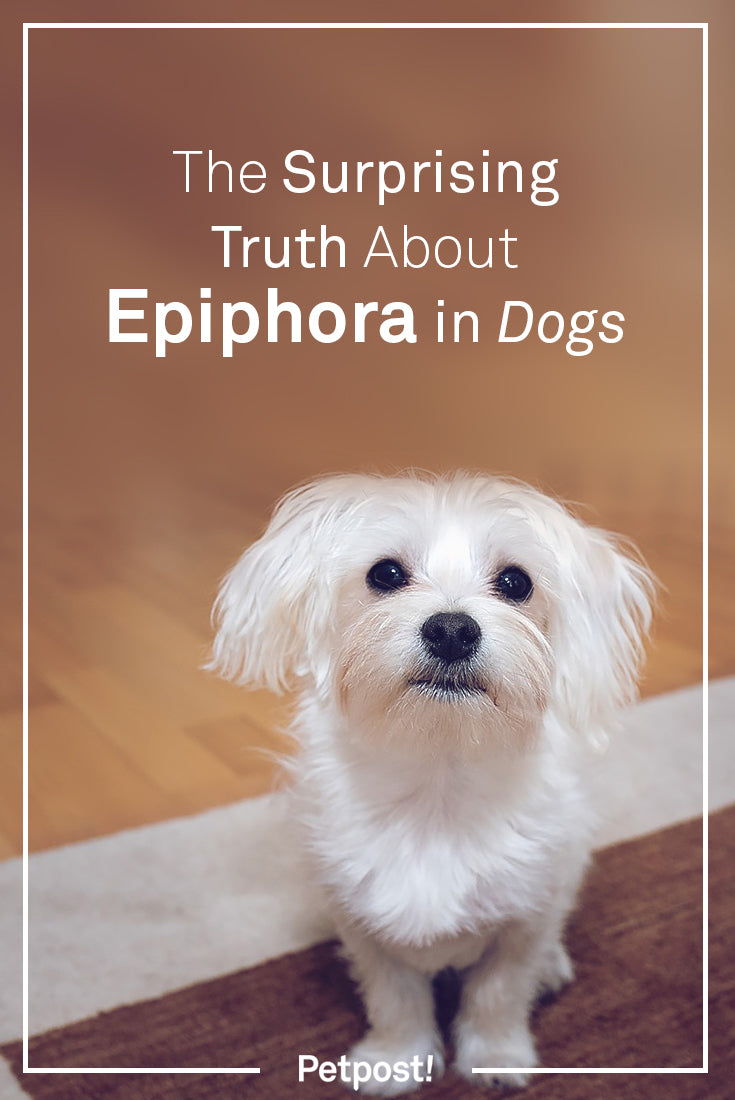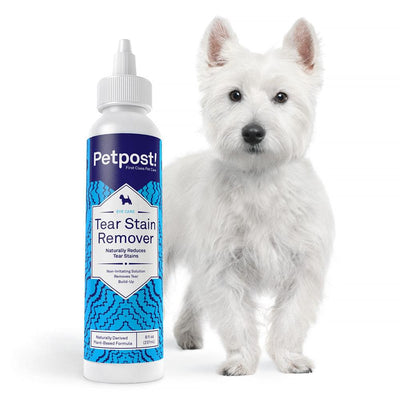The Surprising Truth About Epiphora in Dogs

Runny, wet eyes and reddish-brown, unsightly tear stains? Not only does the overproduction of tears result to a cosmetic catastrophe, it also indicates other underlying conditions that you may need to remedy right away. Epiphora in dogs is one of the most common problems in canine eye health, and whether it’s a one-time occurrence for your Fido or a challenging series of watery episodes throughout the year, it pays to understand it, and know the correct and appropriate way to stop, treat, and prevent this literal and figurative eye sore.
There are also other telltale signs that your fur baby is suffering from epiphora:
- Red, bloodshot eyes
- Swelling around the eye areas
- Pus-like, or mucus-like discharge
- Tender, loose skin under the eyes
- Itchiness (you will see your pooch frustrated and pawing against his face)
- Tear stains (reddish-brown, or in some cases, pinkish in color)
Is it a Disease?
Surprisingly, the overproduction of tears is rarely a stand-alone health concern—it is, for the most part, a symptom rather than an illness in itself.
Sounds complicated? Let’s break down the main reasons why this occurs in our canine buddies:
1. An allergic reaction or automatic response to foreign objects lodged in the eyes. Irritants such as dust, sand, or insects that come in contact with your pooch’s eyeballs are always an unwelcome guest that needs to be immediately deported from the area—and this is where the tears come in. The objective, in a nutshell, is to flush away the offending intruder and wash the eyes clean.
In some cases, though, the eyes wage war on their own constituents. Eyelids, for example, can cause epiphora when congenital problems such as entropion and ectropion (the lower or upper eyelids that fold inwards and against the eye ball) are present. Your pup’s lashes can also grow in the wrong direction and poke mercilessly on Juju’s peepers—this condition is called trichiasis.
Respiratory or food allergies can also trigger the waterworks, just as we humans tear up when we accidentally eat something, or get exposed to something that we are allergic to. If Gigi’s eyes pool up more frequently during certain times of the year, you may be looking at seasonal allergies.
2. Blockage in the tear drainage system. Your dog’s nasolacrimal or tear duct system usually flushes down tears through the puncta, those teeny, tiny holes in the corner of the eye. It then leads to a series of pathways that end up in your pooch’s nose—yup, the nose.
Step one of this process is compromised when the puncta is blocked due to swelling, congenital defects (abnormally small holes, or absence of the hole altogether), or scarring due to previous injuries or trauma. If the tears have nowhere to go, they pool around and under the eye area, get trapped under the fur, and cause further health issues—not to mention those hideous, rust-colored tear stains.
3. Overproduction of tears due to overactive tear glands. A very rare case, in which the lacrimal glands are working overtime to produce tears, even without the presence of irritants in the eyes, underlying disease, or blockages in the drainage system. This is when epiphora in dogs is a condition, and not a symptom of any other health issues. If every other cause is tested by your veterinarian and ruled out, you may want to check if this is the reason why you’re running out of facewipes for Spot.
Your trusted vet may need to take note of any environmental changes you may have made, say, if you did some spring cleaning in your home, or if you switched your daily doggie walk route and ended up in a dusty area. Any new food items that you may have added into your pooch’s meals may also have triggered an episode, and should be eliminated from Vito’s diet.
There are also several clinic tests that can be done to check the particular cause of epiphora. You may need to have a Saline Flush done to make sure you’re not dealing with blocked paths in the nasolacrimal duct system, and a physical check up to see if there are an scars or tissue growths covering the puncta. Rose Bengal Staining, another procedure, rules out any damages in the cornea that may cause swelling or irritation. The more complicated tests, such as Tonometry (for glaucoma) and Dacryocystorhinography (the insertion of a liquid into the tear ducts, viewable via X-ray) can further indentify any problems that may cause the overproduction of tears.
Ending the Drama – No More Tears!
Epiphora in dogs require a little more than the usual wiping, especially if the root of the problem is more complicated than a speck in the eye. A series of saline flushing, or even corrective surgeries may have to be done for abnormal or nonexistent puncta, or if there’s something blocking the duct system that needs to be pushed out.
For the luckier ones, though, switching to a grain-free or vet-prescribed diet may do the trick. Adding superfood into the doggie bowl, such as kefir and coconut oil, also increases your pup’s ability to fight off eye issues, prevent fungal overgrowth, and promote healthy eyes and fur.
As for grooming, choosing the right eye cleanser is your ticket to clear, bright peepers. But don’t go sweeping the pet supplies shelves blindly—the fact that some products made it to the market does not mean they’re good for your beloved buddy.
One big no-no in picking out tear stain removers or cleansers is not reading the ingredients list—or reading the ingredients list and thinking antibiotics is okay. Yes, they kill of bacteria, but unless your vet says your pooch needs it, stay away from antibiotics. Not only can it do more harm than good, your dog may also develop resistance to its good functions if carelessly used.
Fortunately, it’s not hard to find good, quality grooming products that you can use. Coconut-oil based tear stain removers, for one, gently removes those ugly marks under the eyes without bleach or any hard-to-spell chemicals. With regular use, you and your gorgeous Lily will be staring into each other’s tear-free and tear stain-free eyes in no time at all.
Care to share your experience with epiphora in dogs? Tell us how you and your canine friend ended the tears in the comments section!









Natural method to open blocked tear ducts vs surgery
Leave a comment